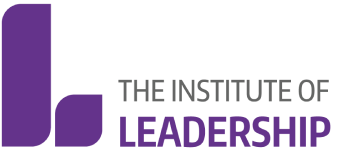What are the origins of TPP’s flexible working culture?
I’d like to think that we were quite flexible before COVID – just as a personal example, I’ve been here for 21 years, have had both my children in that time and, on each occasion, came back on a flexible working pattern. But our approach to flexibility pre-COVID was perhaps more regimented: we had core hours (10am to 4pm), and a digital time clock to monitor attendance. And while we had some homeworking, it was pretty ad hoc and not everyone used it.
In March 2020, at the time of the first lockdown, we had about 12 months left on our office lease and were negotiating a move to the floor below us, which had an identical layout. Fortunately, we pulled the plug on that just at the right time. COVID forced us to become fully remote, as everyone was, and after a year of that we took up office space in a shared facility. There were a couple of snags with that arrangement, in that we only had access to the office for two days a week initially, and couldn’t accommodate all our employees in the smaller office space we had. Plus, our furniture, printers, scanners and marketing collateral were all still in storage. So, that was very much a transitional setting.
However, it did give us some scope to experiment. We first started providing office access on Tuesdays and Thursdays, then expanded it to five days a week – but the appetite to return wasn’t unanimous because employees had become accustomed to that blend of work and home life and really valued it. They were also mindful of ongoing concerns around COVID-related health risks. So, whether we’d wanted to or not, it would have been difficult to go back to how we’d worked before.
That essentially meant that we had to consider becoming a remote-first business, which has been overwhelmingly successful. Fundamentally, it has played into our commitment to equality, diversity and inclusion (ED&I): we’re committed to attracting more diverse talent into the recruitment industry, and to supporting our clients and candidates from an ED&I perspective. That’s critical at a time when the employment landscape has been particularly tight, with a talent shortage across most industries – not least the sectors we specialise in at TPP: charities, education and the public sector.
How does the business manage flexibility in the wake of that transition phase?
Our newer, permanent office is also in a managed, shared facility, but is much more suited to our needs. We have about 15 desks set up with double-screens and a couple of booths for private calls or meetings. In these premises, we also have printers and scanners set up and a cupboard for our marketing collateral. To help employees manage their usage of our space, we use a platform called Skedda, which is incredibly visual: you can see a full floorplan of the office and book a desk for any day you want to come in, which has been hugely important for enabling us to juggle our resources.
We conducted a companywide, hybrid-working consultation to find out what sort of preferences our people have for working in the office environment, and settled on a minimum of two days a month, but encourage office attendance of one day a week ideally for London-based employees. This was to enable us to attract people who live quite far out of London, which we have achieved. But as the office is open from Monday to Friday, employees can come in as often as they like. For our employees outside London, we’ve set a minimum two days per month of office time. The employee consultation has been instrumental in helping us to coordinate the shift to a more personalised style of flexibility
Another important development is that we have joined a platform called Flexa Careers, specifically to verify ourselves as a flexible employer. Flexa independently sense-checks the flexible working environment and policies – as laid out by leadership – with our employees, essentially asking them, “Is your employer as flexible as it says it is?” At the end of that process, you get an employer’s score and an employees’ score.
We are currently ranked as the third most flexible recruitment business on Flexa, which has had a really positive impact on our employer brand. It’s a kitemark-like endorsement of our authenticity on flexible working.
What would you say are the most rewarding and the most challenging aspects of making this shift?
On the most-rewarding side, the shift has felt like quite a progressive move for our industry as a whole. For TPP specifically, though, the attraction of fresh talent and the retention of existing employees have been key for maintaining our momentum over the past couple of years, and it has been encouraging to receive so much positive feedback from our people about how much they value the working environment they now have. Our discussions with employees have fostered mutual trust and transparency – we’ve trusted them to honour their contracts and do the work that they need to do, and they have trusted us not to micromanage them.
There has been more innovation. I heard on a radio programme recently that while it’s generally assumed that working from home stifles innovation, research shows that remote working sparks more innovative behaviour than people realise. That really resonated with me as a business leader, because I can say that I have been more creative under the way we work now than I ever was under standard, full-time office hours. Quite a few moments of creativity have come to me while I’ve been out on a lunchtime run, for example. Of course, you can experience that in group environments, too – but there’s a strong case to be made that people can be just as creative when they’re not distracted by the hustle and bustle of an office environment.
In addition, our arrangements have lowered anxieties around presenteeism and lateness – and from a purely practical perspective, our overheads are much easier to manage.
On the challenges side, the main issue is that this model doesn’t suit everybody. Out of around 50 employees, one or two struggle with the remoteness of the setup – and I think that ties in with the challenges around employing people with different levels of experience, or ‘working-life maturity.’ Some may be quite used to acting under a certain amount of self-discipline and working fairly independently, while others may find they have a greater comfort level with a more day-to-day management style. So, as a company, we have to be more deliberate in finding out and understanding the reasons why people want flexibility – because that will help to embed longevity into the employer-employee relationship.
That extends to putting more emphasis on traits such as self-motivation and self-starting in the interviewing process. Onboarding new starters isn’t always seamless – so, to build a base of personal interaction, we encourage new hires to come into the office perhaps a bit more regularly than other employees, to pick up more in the way of on-the-job training experience.
Monitoring productivity in a remote working set-up is always likely to be more challenging. Shifting our focus to being as outcomes orientated as possible is the way forward and, to help with this, we’re currently updating our CRM to ensure we get a more accurate form of productivity reporting that works within the framework of our commitment to flexibility.

